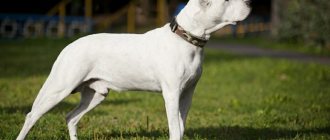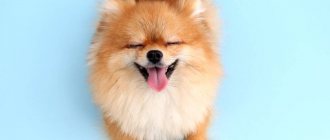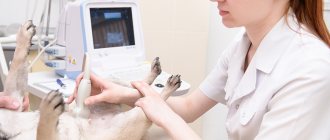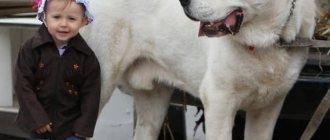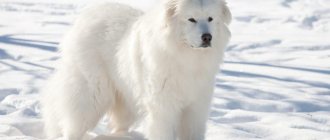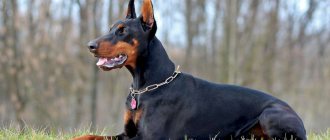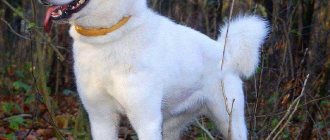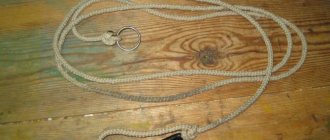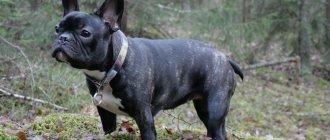Man's best friends are a lot of love, emotions, fur and drool. Saliva is a natural fluid secreted by the body of all mammals. It is needed to create a protective barrier, moisturize the mouth, and the process of food absorption. For some reason, dog saliva is credited with incredibly effective healing properties that can almost heal complex wounds.
The norm is:
- an abundance of saliva on a hot day (protecting the dog’s body from overheating),
- while walking in the cold,
- during heat (or if the male “senses” the female),
- under intense load,
- before feeding (reaction to the smell of food),
- after drug intervention.
No matter how much people love dogs, it happens that excessive salivation poisons the life of the owners, and sometimes signals health problems in the pet.
Content
1. The role of saliva 2. Why does a dog drool 3. Pathogenic causes 4. How to recognize increased drooling 5. What should the pet owner do 6. Diagnosis and treatment 7. Diagnosis of oral pathologies 8. Prevention of increased drooling
The phenomenon when a dog drools from its mouth is called hypersalivation. Synonyms for excessive drooling are ptyalism, sialorrhea. Whatever the reason for this condition, an attentive owner will try to figure it out and help the pet. His correct and timely actions can even prevent the development of an impending pathology.
About preventing excessive salivation
The most effective preventive measure is timely vaccination of the animal. The main preventive measures also include sanitary standards for keeping dogs, feeding hygiene, and regular antiparasitic procedures. It is important to limit your pet’s contact with stray animals as much as possible. If you notice persistent excessive salivation in your dog, you should immediately contact your veterinarian. A timely diagnosis and prompt medical care significantly increase the chances of a full recovery.
The role of saliva
Saliva is a vital serous-mucosal secretion secreted by 3 pairs of large and several small glands located in the dog’s mouth. Its functions:
- moisturizes the oral mucosa;
- promotes the recognition of the taste of food and the production of gastric juice;
- facilitates the passage of food into the stomach;
- improves food digestion;
- neutralizes and removes toxins.
Antimicrobial substances in saliva help disinfect wounds, which is why they say: “heals like a dog.”
Conclusion
While all of these breeds are known for their ability to drool, keeping them cool, hydrated and well fed will help minimize the amount of drool you have to deal with and will also make them more comfortable.
However, be prepared to use drool towels and plenty of clean surfaces around your home, and accept the fact that drool will take some getting used to no matter what extra steps you take.
Why does a dog drool?
The amount of secretion secreted depends on feeding characteristics, but not only. There are 3 types of reasons why saliva may flow: physiological, psychological and pathogenic.
The first 2 types cause temporary hypersalivation. It goes away when the provoking factor is eliminated. For example, a hungry dog smells food. Olfactory receptors send a signal to the salivation center located in the brain, and the secretion of the salivary glands begins to be actively produced. A well-fed animal does not react this way to food, although the sight of its favorite treat makes all pets salivate.
Ptyalism is provoked by irritation of taste buds with bitter, sour, unpleasant foods, and medications. Thirst in hot weather and getting sand in your mouth will also cause drooling.
Motion sickness in transport can become a serious problem. Dogs that cannot tolerate shaking due to problems with the vestibular system begin to leak foamy liquid profusely during a car ride, even to the point of vomiting. If this property does not go away over time, drugs that prevent motion sickness are used.
Drooling may occur in hunting breeds due to physical fatigue, and in 3-4 month old puppies due to teething. Another physiological factor is associated with pleasure, when the owner’s caresses are extremely pleasant.
Psychological reasons include various types of stress, fear, and anticipation of danger. Hypersalivation can be caused by loud sounds, a meeting with an enemy, a change in familiar surroundings, or a long absence of the owners.
Attention!
Excessive drooling caused by physiological and psychological reasons is not dangerous for the dog - which is why it should not cause alarm to the owner.
Bullmastiff
The bullmastiff's menacing appearance can mislead a potential breeder. Behind the stern look hides the character of a mischievous puppy who will happily throw himself on the neck of his future owner. It is difficult to withstand the strong hugs of a bullmastiff, because its weight can reach 60 kg. The large size of the dog comes with constant salivation, so the owner must get used to his display of feelings. The affectionate bullmastiff will look into your eyes with tenderness and leave new stains on your clothes and your favorite sofa.
Pathogenic causes
If so much saliva is produced that it drains from the jaw, the animal is forced to constantly swallow it, therefore, the cause of sialorrhea is a disease or other pathological condition of the body.
Provoking factors:
- Viral diseases. Excessive salivation is accompanied by fever, cough, increased thirst, gag reflex, and an unpleasant odor from the mouth may be felt.
- Ear pathologies. This is due to the fact that one of the large salivary glands is located in the parotid region.
- Poisoning caused by drugs, pesticides, poisonous plants, spoiled food. The dog not only drools, but the contents of the stomach vomit out.
- Gastrointestinal diseases. Pathologies of the liver, spleen, and cholelithiasis cause nausea and vomiting, which are accompanied by increased salivation. In this case, a putrid odor may emanate from the mouth. Possible loose stools or constipation.
- Pathologies of the oral cavity. These include: stomatitis, gum disease, caries. Drool hangs from the mouth if a foreign body is stuck between the teeth. The assumption will be confirmed if the pet does not eat, does not drink, or even refuses treats because it hurts to chew.
- Infection with worms. Helminths in the small intestine cause intoxication of the body, which becomes the cause of ptyalism.
- Allergic reactions of any etiology.
- Disorders of the functions of the nerves that transmit impulses to the salivary glands.
- Epileptic seizures. Drooling in this case portends the approach of an attack.
- Stones in the ducts of the salivary glands (sialolithiasis). In this case, the viscous mucus hangs in strands.
- Malocclusion. Saliva flows due to constant trauma by teeth to the gums and tongue.
Finally, hypersalivation is a frequent accompaniment of pain that exhausts the dog.
Important!
Dangerous infectious diseases - rabies, botulism - are also one of the reasons.
Shar Pei
The Shar Pei is the real teddy bear of dogs. Numerous folds on the body and face have made the Shar Pei famous, and looking at it, one feels the desire to pet and hug the pet. The dog's character does not match its appearance. The Shar Pei cannot be characterized as affectionate and gentle; he prefers to spend time alone with himself. The velvety beauty does not need constant communication with his owner. He will become part of the family, but his self-sufficient nature is unlikely to allow him to doze peacefully on the next pillow.
How to recognize increased drooling
The secretory activity of the salivary glands occurs periodically and is associated with food intake. Normally, depending on the breed of the dog, about 1 liter of biological fluid is released. The dog swallows it and does not “drool” unless there are reasons stated above. However, there are “slobbery” breeds, including:
- boxers;
- mastiffs;
- Saint Bernards;
- Shar-Pei;
- Great Danes;
- bloodhounds;
- English, French and continental bulldogs.
In these breeds, sialorrhea is caused by drooping cheeks or jaw structure that does not close completely.
Neapolitan Mastiff
This luxurious handsome man with eternal sadness in his eyes is an excellent watchman. A country house is suitable for his maintenance, where he can demonstrate his skills as a true security guard. The Mastiff is no stranger to aggression, although he only shows it towards strangers. In his family, the Neapolitan hero is a real affectionate lion: he will happily look after the child, allowing him to play nearby or pull his ears.
What should a pet owner do?
If hypersalivation begins in a pet that is not a breed with natural profuse salivation, the owner should carefully examine his four-legged friend and analyze the situation. Perhaps the animal is experiencing stress, then it needs to be given more attention.
Sometimes, while walking, a dog may eat a non-food product or a small rodent, then the mouth needs to be rinsed. In this case, salivation is a protective reaction: it removes harmful substances.
If there are no visible injuries, there is no foreign body in the mouth, and the owner cannot determine the reason why saliva is flowing, you need to consult a doctor. You should not postpone a visit to the veterinary hospital if there are signs of poisoning or an infectious disease: vomiting, diarrhea, refusal to eat, dry, hot nose.
Newfoundland
This large bear cub is hard to miss - its powerful paws and soft fur attract many glances. The Newfoundland is a combination of grace, calmness and amazing endurance, which allowed him to become the hero of films, stories and legends about incredible courage and bravery. The Newfoundland is a rather leisurely dog; it does not need daily long-distance marathons. The furry giant has long been known for its love of water. The pet’s “drooling” cannot be called too abundant, although characteristic marks may remain not only on its shiny fur, but also on the owner’s trousers.
Diagnosis and treatment
The occurrence of hypersalivation is a signal that something wrong is happening to the dog. To help a pet, the owner must know the symptoms of pathologies that cause excessive saliva flow.
If a dog loses its appetite, loses weight, or has abnormal bowel movements, this may be a sign of helminthiasis. In this case, you need to be tested for worms and undergo treatment with an anthelmintic drug prescribed by a veterinarian.
If a dog has lost consciousness, is shaking, has convulsions, and has foamy saliva coming out of its mouth – these are symptoms of an epileptic seizure.
When poisoned, the dog constantly licks its face and worries. Frequent belching is observed, rumbling in the stomach is periodically heard, and diarrhea may begin. First aid is to give activated carbon or other absorbents. The animal is provided with plenty of fluids and is not allowed to eat for 24 hours. If symptoms do not disappear and a fever appears, medical attention will be required.
Symptoms of rabies include restlessness, lethargy, and hydrophobia. The pet is shaking, has difficulty swallowing, and has vomiting and diarrhea. An animal with such signs is immediately isolated and the veterinarian is informed. The dog's further fate is euthanasia.
Poisoning
Most often, an abundance of saliva occurs when the body is poisoned. And this is not necessarily low-quality food; it is enough to “overload” the stomach with your pet’s favorite dish or give it chocolate, specific fruits, or even fatty pork that is harmful to dogs.
Saliva may appear as a reaction to contact with household chemicals or poisons used in the household. Once in the body, they cause nausea, accompanied by vomiting and severe salivation.
In such a situation, it is necessary to rinse the stomach; this can be done with a large enema with water, forcing the pet to drink a lot of liquid, causing a gag reflex. After the water coming out becomes clean, you can feed the coal, energy gel (putting it on the root of the tongue), and give the animal a rest.
In case of relapse or poisoning, immediately take it to a veterinary clinic.
Diagnosis of oral pathologies
Stomatitis is a common pathology that causes excessive saliva flow. It hurts the dog to chew, which is why it refuses solid food, chooses soft food, eats carefully and slowly, with stops.
There are such forms of stomatitis:
- Catarrhal. The oral mucosa is swollen, hyperemic in places, and covered with plaque. Treatment consists of treating the oral cavity with furatsilin, a pale pink solution of potassium permanganate, a 3% solution of boric acid, and decoctions of medicinal herbs. Food - broths, liquid porridges, dairy products, jelly.
- Ulcerative. Ulcerations form on the tongue and oral mucosa. For treatment, a mixture of iodine and glycerin (1:4), lapis, and syntomycin emulsion are used. Antibiotics are prescribed if necessary.
- Atrophic. Diagnosed in emaciated and old dogs. Vesicles, bleeding wounds, and ulcers are found on the inflamed mucosa.
With stomatitis, a putrid odor emanates from the mouth. In severe cases, there is an increase in temperature, lethargy and apathy of the animal.
When a foreign object gets stuck in the mouth, symptoms similar to stomatitis appear. There may be drops of blood in the saliva if the mucous membrane is injured. In this case, you need to remove the object and treat the wound with a disinfectant solution.
It's worse if the bone gets stuck in the throat. The dog has difficulty breathing, he constantly rubs his face with his paw, and he begins to vomit. You need to act quickly and carefully so as not to push the fragment into the esophagus. You can use tweezers and a flashlight.
With dental caries, there is a painful reaction to chewing food. The dog chews on one side of his teeth. He reacts painfully to tapping on a sore tooth, in which a dark-colored depression is noticeable. Treatment is carried out only in a veterinary hospital.
Bloodhound
Known for their keen sense of smell, droopy, almost melancholy appearance, and docile temperament, Bloodhounds are also known to drool.
Their natural instinct for smell and sometimes stubborn nature means you may have to work hard to get reliable feedback, but they make gentle companions well suited to family life. They have long, wrinkled faces with very loose skin around the mouth, and they can accumulate a lot of saliva in these cheek pockets.
Infections caused by viruses
Every pet can get sick; fever, dry nose, refusal to eat, increased thirst, apathy are reasons to consult a specialist. And an increased amount of drool may indicate a viral disease contracted by the dog.
The list of viral diseases carried by animals includes:
- carnivore plague,
- hepatitis,
- enteritis,
- tracheobronchitis,
- parainfluenza
All these diseases can be treated exclusively in a veterinary hospital.
Veterinarians' comments
Ivan Z.
The owners of an 8-month-old St. Bernard contacted me. This is a “slobbery” breed. But in this case, the dog did not eat, had difficulty lapping up water and moaned in pain. Diagnosis: jaw dislocation. This is the first time in my practice. The dog's drool flowed like a river and had a thick consistency.
Elena O.
An interesting case in my practice. The owners of a 4-year-old shorthaired pointer noticed severe hypersalivation in the dog, which occurs after trips to nature in the warm season. The flow stopped after a day or a little more. There were suspicions about the development of the disease. We went to the clinic.
Initially, it was thought that the dog suffered from heatstroke every walk. Further it turned out that the dog ate and licked lizards and frogs, the increased flow of saliva was the body’s reaction, and was not accompanied by additional symptoms.

